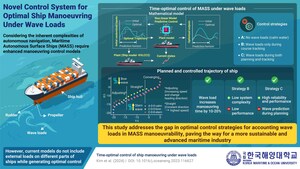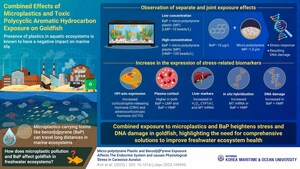Latitudinal Shifts in Atlantic Tropical Cyclones: National Korea Maritime & Ocean University Study Uncovers Different Type of Climate Migration
Study reveals the mechanisms causing an equatorward shift in the lifetime maximum intensity locations of North Atlantic tropical cyclones
BUSAN, South Korea, July 6, 2022 /PRNewswire/ -- Tropical cyclones (TCs) are extremely destructive weather events imperiling coastal communities. Long-term climatological changes can significantly alter the intensity and course of TCs, possibly making them more dangerous. A key factor for studying the activity of TCs and their societal impact is its lifetime maximum intensity (LMI) location, which is where a TC attains the strongest intensity of its lifetime.
The LMI locations of TCs over most oceans have migrated poleward in the past three decades. However, the LMI locations of North Atlantic TCs have shifted toward the Equator. A major influence in this shift is the Atlantic Multidecadal Oscillation (AMO)—a natural variability in sea surface temperatures (SST) in the North Atlantic Ocean spanning several decades. It is characterized by two phases: cold and warm. But there is limited research on how the AMO affects LMI location migration in the North Atlantic.
To further this understanding, a multi-university research team led by the Korea Maritime and Ocean University (KMOU), explored the shift in LMI latitude (ΦLMI) in North Atlantic during peak hurricane season (August–October) between 1948 to 2018. Their research was made available online on 21 February 2022 and was published in Volume 49, Issue 5 of Geophysical Research Letters on 16 March 2022. "We designed a metric to evaluate how AMO-related variations in dominant track patterns (track ΦLMI) and pure changes in the same track pattern (pure ΦLMI) influence the total ΦLMI migration. Based on this, we analyzed the annual mean variation in the LMI location," explains Prof. Hyeong-Seog Kim of KMOU, who is the lead author of this study.
The team found that the total ΦLMI shift is significantly affected by AMO, track ΦLMI, and pure ΦLMI. Changes in the AMO phase and related parameters, such as SST, potential intensity of TCs, and vertical wind shear, play a key role in causing track ΦLMI and pure ΦLMI variations. This, in turn, affects the location of origin and frequency of North Atlantic TCs, ultimately causing a shift in total ΦLMI.
Consequently, during the warm phase of AMO, there is an increase in the frequency of TCs originating in the tropics and a decrease in cyclones originating in the subtropics. This results in a marked shift in the total ΦLMI towards the equator. Conversely, during the cold phase, there is a poleward shift in the total ΦLMI.
Expanding on these findings, Prof. Kim says, "Under the current warm AMO phase, the LMI locations of TCs have shifted equatorward in recent decades. Given the land-sea distribution in the Atlantic, this implies that TCs reach their LMI away from the land—potentially less destructive near the coasts. However, a poleward shift during the cold phase, likely to occur in the near future, combined with the effects of global warming, could mean that TCs last longer and cause far more damage on land."
An improved understanding about the behavior of TCs is crucial, both from a scientific and socioeconomic perspective. This research provides insight into the shifting trends in North Atlantic TCs, which allows more foresight into the activity of future cyclones to enable better adaptation planning for coastal communities.
Title of original paper: Latitudinal Variation of the Lifetime Maximum Intensity Location of Atlantic Tropical Cyclones Controlled by the Atlantic Multidecadal Oscillation
Journal: Geophysical Research Letters
DOI: https://doi.org/10.1029/2021GL097459
Website: http://www.kmou.ac.kr/english/main.do
Contact
Kyunghwa Choi
+82 51 410 4712
[email protected]
SOURCE National Korea Maritime & Ocean University

WANT YOUR COMPANY'S NEWS FEATURED ON PRNEWSWIRE.COM?
Newsrooms &
Influencers
Digital Media
Outlets
Journalists
Opted In






Share this article